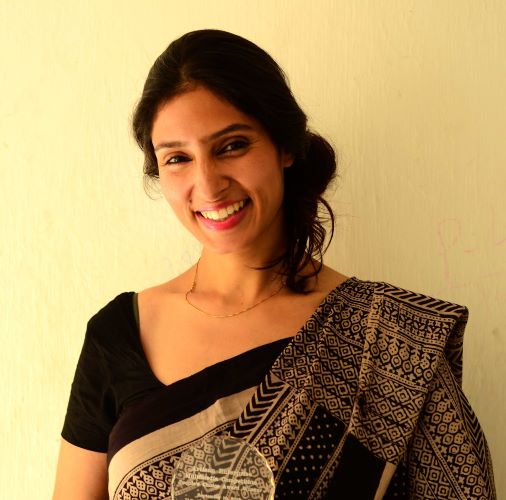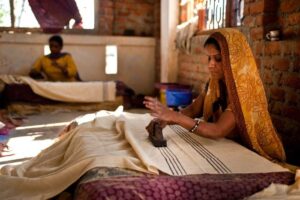How a research-based blog on Indian crafts turned into an e-commerce platform

Gaatha Co-Founder & Director Shivani Dhar
Upasana Kaura
Launched as a social enterprise with a mandate to research, document, showcase, handicrafts and heritage in 2009, today, Gaatha is a one of its kind e-commerce platform that sells Indian handicrafts and heritage items, both décor as well as utility. The platform It has over 250 artisans on board from across the country. “We strive to keep a healthy diversity in our research and products, but we have to constantly deal with traders and middlemen who compromise with the quality of a craft to compete in the market,” says its Co-Founder & Director Shivani Dhar.

In an interview with Life & More, Dhar tells us more:
When and how did Gaatha come into being?
Gaatha owes its birth to a research project to create a storehouse of information about little-known Indian crafts accessible at one place. The project was envisioned by Prof MP Ranjan and Aditi Ranjan at the National Institute of Design (NID). Unfortunately, the project got shelved due to various reasons.
Team Gaatha at that time included NID students, and it began with a blog to tell stories about crafts and people involved in making them. They wanted to disseminate information about crafts and craftsmen among public. All the stories and documentation was done by the team with its own funding. This subsequently led to setting up of an online store to connect artisans to the market directly so as to enable them to showcase their work to a larger audience and empower them to create and innovate rather than being played by traders and middlemen.
How is Gaatha different other e-commerce platforms?
We are a research-based, craftsmen-focused platform, and storytelling is our USP. Handicrafts have never ever been presented globally in tandem with the heritage and culture that gave them the birth. Our aim is to bring the lost respect and wealth back to these beautiful and aesthetically rich Indian handicraft clusters. These researches are important because just like Industrial goods sell on ‘features’, crafts sell on the processes/ stories/ heritage that go into making them.
How important is it to preserve indigenous crafts and knowledge?
It is crucial for, when a craft dies we not only lose the object, we lose generations of faith and wisdom that went into developing it and trying to show us an elegant balanced way of life.
How do you help promote crafts and craftsmen?
We strive to keep a healthy diversity in the coverage of our researched stories and products. We have a documentation team that does research and documentation of various crafts across India. We meet the artisans personally, especially those who are far removed from the mainstream conversations, and empanel them only after understanding their work.
But our engagement with artisans is far beyond the mere commercial exchange; we also work towards improvement of artisans’ living standards, which we believe is our greatest strength and differentiator. Not just this, we also educate masses about crafts and the value of handmade products.
We also help craftsmen with our design inputs if we see it bringing a potential difference in filling the gap between new age utility and traditional sensibilities and makes their product more sellable in the market.
We intend to cover everything from pottery to ship making and even the simple daily utility-based crafts such as rope or broom making. In overall communication mobile technology is helping a lot.

What all products are available?
Indian crafts are so varied, so is our inventory. It ranges from extremely sophisticated and high-end products like Kashmir Pashmina shawls, Gold Pichwai paintings to utility based items like kitchenware. One thing that runs common to everything we keep at Gaatha store is the quality and good aesthetics.
What challenges do you face?
The most difficult task is dealing with duplicate products (many people started online businesses during the lockdown). You require good knowledge and an eye to identify replicas in times like these when the market is flooded with cheap lookalikes. The task is doubly challenging because we have to make sure that we filter out these replicas while making selections and also teach the buyers/ readers the same so that they know that they are paying for a block printing job that has taken someone a week to get the effect over something that has been drawn out of a printing machine in a matter of a minute…. and will obviously never have the same effect and feel…. this is where we educate through stories… Dealing with ‘professional’ traders and middlemen is another huge challenge.
What are your future plans?
To join hands with as many like-minded people as possible, bringing stories and products to our customers.




1 Comment
First off I want to say terrific blog! I had a quick question that I’d like to ask if you do not mind. I was curious to find out how you center yourself and clear your head before writing. I have had difficulty clearing my mind in getting my thoughts out. I truly do take pleasure in writing however it just seems like the first 10 to 15 minutes are generally wasted simply just trying to figure out how to begin. Any recommendations or tips? Many thanks!